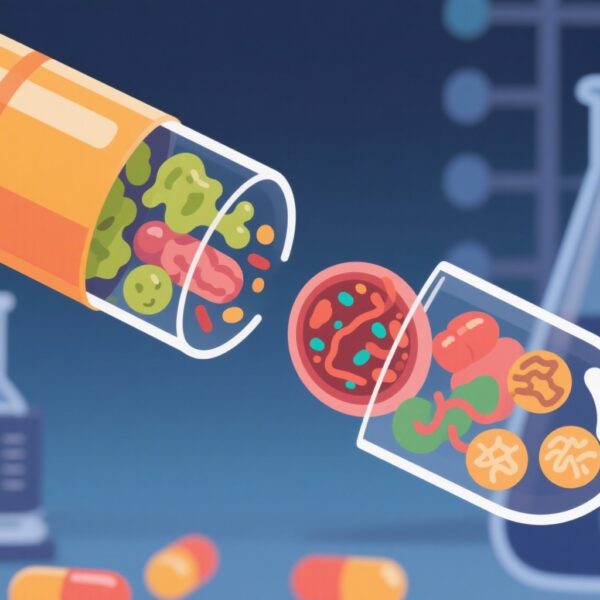Introduction
Adolescence is a pivotal developmental period marked by profound biological, psychological, and social changes. During this phase, the prevalence of mental health complaints escalates significantly, posing substantial concerns for individual well-being and public health systems. Recognizing early indicators of mental health deterioration could be instrumental in implementing preventive strategies. A recent large-scale prospective study conducted in Denmark provides compelling evidence linking self-reported mental well-being in adolescence to subsequent adverse health outcomes and mortality, emphasizing the importance of early detection and intervention.
Study Background and Rationale
The increasing prevalence of mental health issues among adolescents worldwide necessitates a deeper understanding of early risk factors. Despite extensive research on clinical psychiatric disorders, less is known about the broader concept of mental well-being, particularly its multidimensional nature and predictive value for future health outcomes. This study addresses this gap by operationalizing mental well-being through a comprehensive, multidimensional assessment and tracking its association with various adverse outcomes during approximately eight years of follow-up.
Study Design and Methods
The study employed a large prospective cohort design involving 67,945 Danish students aged 15 to 19 years at baseline in 2014. Data collection involved self-report questionnaires encompassing nine indicators of mental well-being: life satisfaction, self-esteem, irritability, low mood, stress, loneliness, self-efficacy, and confidence in parents and friends.
Using Latent Class Analysis (LCA), researchers categorized participants into four distinct mental well-being groups: Good, Moderate, Poor, and Very Poor. The cohort’s linkage with national health and social registers enabled the tracking of key outcomes, including mental illnesses, self-harm, suicide attempts, hospital contacts related to alcohol and substance use, emergency visits due to violence, and all-cause mortality, over a mean follow-up of 8.2 years.
Descriptive statistics and regression models—Poisson and Cox proportional hazards—were utilized to analyze the associations between baseline social determinants, mental well-being groups, and subsequent health outcomes.
Key Findings
The analysis revealed four distinct mental well-being groups, with 32% classified as having Good well-being, 35% Moderate, 19% Poor, and 14% Very Poor. Indicators of social disadvantage, such as financial difficulties and parental alcohol problems, showed clear gradients across these groups, with increased disadvantage correlating with poorer mental well-being.
Children with Very Poor mental well-being faced substantially higher risks of adverse outcomes. Adjusted hazard ratios (HRs) for mental illness, for instance, ranged from 1.51 in the Moderate group to 5.32 in the Very Poor group compared to those with Good mental well-being. Corresponding incidence rate differences per 10,000 person-years were 27.2, 85.5, and 230 respectively.
Similarly, risks for self-harm, suicide attempts, substance-related hospital contacts, violence-related emergency visits, and all-cause mortality increased progressively with poorer mental well-being. Remarkably, these elevated risks persisted throughout the entire follow-up period, underscoring the long-term prognostic significance of adolescent mental well-being.
The validity of these findings was reinforced through external validation in an independent dataset, demonstrating robustness and generalizability.
Implications for Clinical Practice and Public Health
This study underscores the critical importance of viewing mental well-being as a multidimensional construct that extends beyond the absence of clinical disorders. Early, multidimensional assessments of adolescent mental health can serve as vital tools for identifying individuals at elevated risk for future adverse outcomes.
Healthcare providers, educators, and policymakers should prioritize mental health screening programs that incorporate broad well-being indicators. Interventions aimed at mitigating social disadvantages and bolstering social support networks are likely to have meaningful impacts in reducing the long-term health burden.
Limitations and Future Directions
While the study’s large sample size and comprehensive data linkage are strengths, limitations include reliance on self-reported measures subject to bias and the observational design, which precludes causal inference. Further research should explore mechanisms underlying these associations and evaluate intervention effectiveness targeting adolescent mental well-being.
Conclusion
The evidence from this extensive cohort study compellingly demonstrates that poor adolescent mental well-being is a significant predictor of adverse health outcomes and mortality in young adulthood. These findings advocate for integrated, multidimensional screening approaches and early intervention strategies to address mental health complaints proactively during adolescence, ultimately reducing the long-term societal and individual burden of mental illness and related adverse events.



